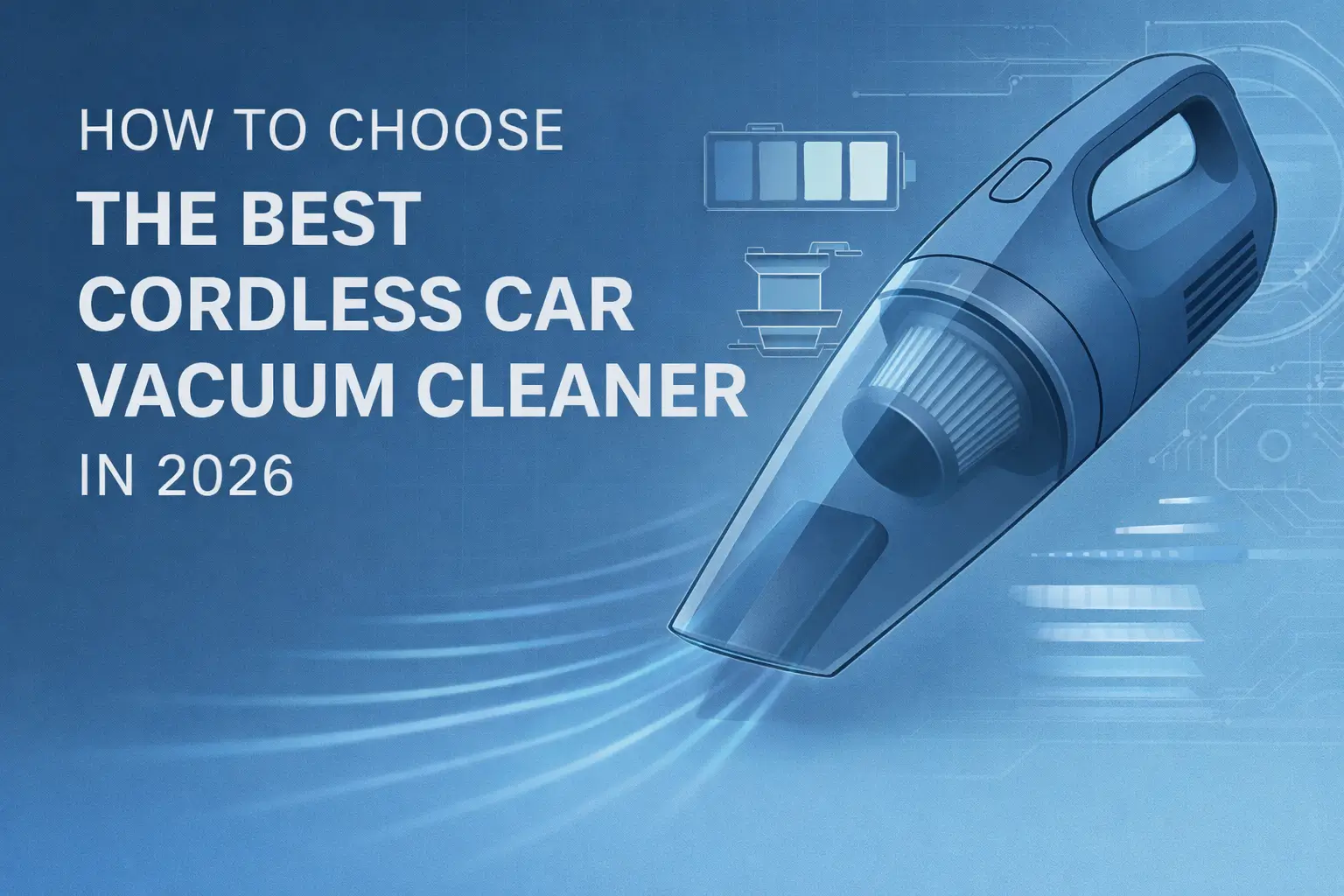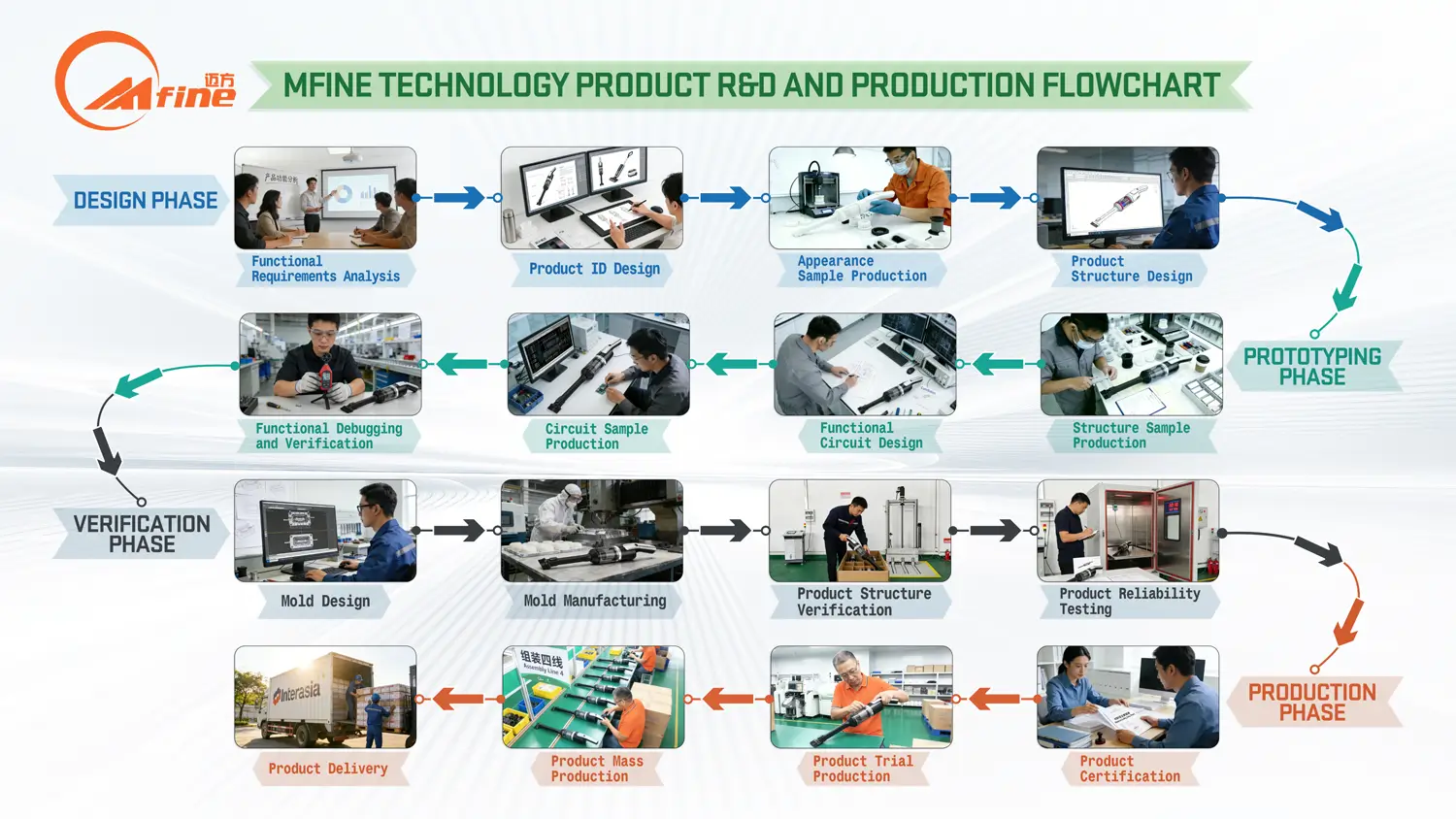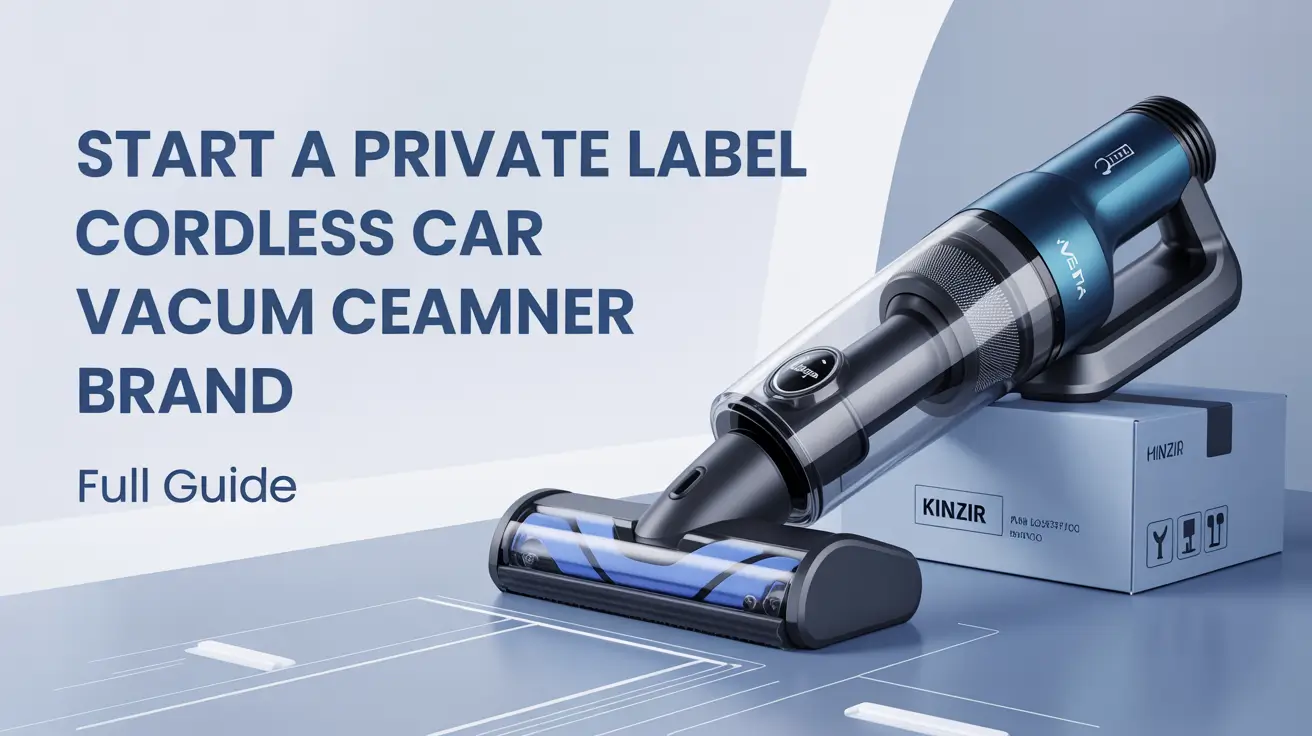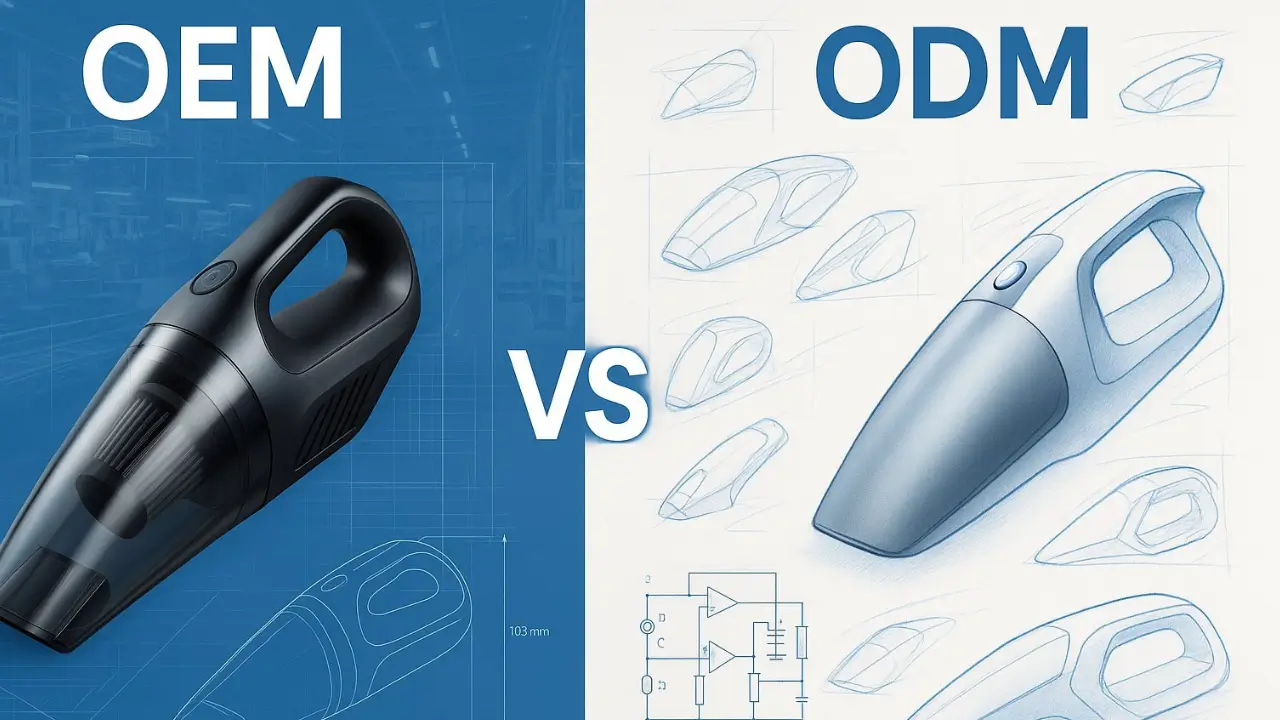Car owners often overlook the air quality inside their vehicles, but dust, pollen, and allergens can build up quickly in cabin spaces. HEPA filters in cordless car vacuums provide a powerful solution by capturing 99.97% of particles as small as 0.3 microns, making them essential for maintaining clean air while driving. Kinzir, the leading wholesale portable, rechargeable car vacuum cleaner manufacturer in China, is here to share everything you need to know about HEPA filters in car vacuum cleaners.
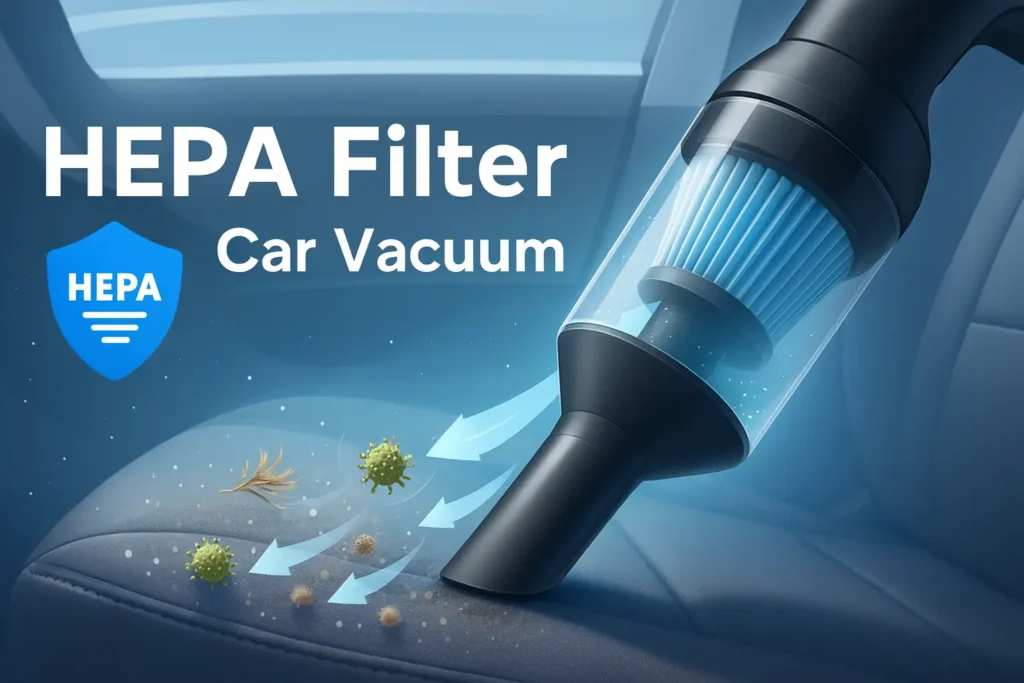
HEPA filters transform ordinary car vacuums into powerful tools that remove harmful particles and allergens from vehicle interiors, protecting passengers from respiratory irritants and improving overall cabin air quality. Regular car vacuums may pick up visible dirt, but they often blow microscopic particles back into the air through their exhaust systems.
Understanding how HEPA technology works and choosing the right vacuum can make a significant difference in your driving experience. The investment in HEPA-equipped car vacuums pays off through better health outcomes and cleaner vehicle environments for you and your passengers.
Why Cabin Air Quality Matters
Car interiors create enclosed spaces where dust, allergens, and debris accumulate quickly. Multiple contamination sources combine with poor air circulation to create unhealthy breathing conditions for drivers and passengers.
How Confined Car Interiors Trap Dust, Pollen and Fine Debris
Car cabins function as sealed chambers that collect airborne particles over time. Limited ventilation allows dust and pollen to settle on surfaces rather than escape.
The small interior space means contaminants become concentrated. Air circulation systems recirculate existing cabin air, spreading particles throughout the vehicle.
Upholstery and carpeting act like filters that capture fine debris. These materials hold onto:
- Microscopic dust particles
- Seasonal pollen grains
- Pet hair and dander
- Fabric fibers
Windows and doors create tight seals that prevent natural air exchange. This trapping effect makes automotive air quality worse than outdoor air in many cases.
HEPA vacuums improve cabin air by removing these trapped particles from surfaces before they become airborne again.
Common Sources: Road Dust, Pet Dander, Food Crumbs
Road dust enters through door openings and ventilation systems. Highway travel kicks up fine particles that coat interior surfaces.
Pet dander spreads throughout the cabin when animals ride in vehicles. These microscopic skin flakes trigger allergic reactions in sensitive passengers.
Food crumbs break down into smaller particles over time. Eating in cars leaves residue that attracts insects and creates odors.
Other contamination sources include:
- Pollen from outdoor air
- Clothing fibers and lint
- Cigarette smoke residue
- Mud and dirt from shoes
Regular cabin air quality vacuum maintenance removes these contaminants before they affect car hygiene. Clean car environment requires addressing all particle sources through proper filtration systems.
What Makes a Filter HEPA
HEPA filters must meet strict government standards to earn their name, with true HEPA filters capturing 99.97% of particles at 0.3 micrometers. Different classification systems rate HEPA filters by their efficiency levels.
Definition of True HEPA Versus HEPA-Type
True HEPA filters meet the U.S. DOE HEPA standard of removing 99.97% of particles that are 0.3 micrometers in diameter. This standard applies to the most penetrating particle size, making it the hardest test for any filter.
HEPA-type filters do not meet this strict requirement. They typically capture 85% to 95% of particles at 0.3 micrometers.
The difference matters for car vacuum performance. True HEPA vacuum for cars removes fine dust and allergens that HEPA-type filters miss.
Key differences:
- True HEPA: 99.97% efficiency at 0.3 µm
- HEPA-type: 85-95% efficiency at 0.3 µm
- Testing: True HEPA undergoes rigorous government testing
- Cost: HEPA-type filters cost less but perform worse
Car owners should look for “True HEPA” labels when buying HEPA car vacuum filters. The higher price pays for better air filtration technology.
Standard Classes Such as H13 and H14
European and international standards use different ratings for HEPA filters. The EU EN 1822-1 and ISO 29463 systems classify filters from H10 to H14.
H13 filters remove 99.95% of particles at their most penetrating particle size. H14 filters achieve 99.995% efficiency at the same test point.
Both H13 and H14 exceed the U.S. DOE HEPA standard requirements. H13 filters work well for most car vacuum applications.
HEPA filter classes:
- H13: 99.95% efficiency
- H14: 99.995% efficiency
- Testing standard: EU EN 1822-1 / ISO 29463
- Performance: Both exceed U.S. HEPA requirements
Car vacuum manufacturers often use H13 filters because they balance cost and performance. H14 filters provide extra protection but cost more to produce and replace.
How HEPA Works in a Car Vacuum
HEPA filters use three main methods to trap particles: interception, impaction, and diffusion. The dense fiber structure makes these filters especially good at cleaning car interiors where dust and allergens collect.
The Three Capture Mechanisms: Interception, Impaction, Diffusion
Interception happens when particles flow close to a fiber and get caught. The particle doesn’t hit the fiber directly but passes within one particle radius of it. This method works best on medium-sized particles like pollen and pet hair.
Impaction occurs when larger particles can’t follow the airflow around fibers. These particles crash into the fibers and stick. Dust from car seats and floor mats gets trapped this way.
Diffusion captures the smallest particles. Tiny particles move randomly due to air molecules bumping into them. This zigzag movement increases the chance they’ll hit a fiber and get trapped.
| Mechanism | Particle Size | Common Car Pollutants |
|---|---|---|
| Interception | Medium (0.1-1 micron) | Pollen, small dust |
| Impaction | Large (1+ micron) | Pet hair, dirt, debris |
| Diffusion | Small (<0.1 micron) | Smoke, fine dust |
Importance of Dense Fiber Mats for Upholstery and Floor Mats
Dense fiber mats create more chances for airborne particles to get trapped. Car vacuums with HEPA filters need this tight weave to handle the heavy dust load from upholstery and carpets.
The fiber density forces air to take a winding path through the filter. This longer journey gives particles more opportunities to contact fibers. Floor mats and seat cushions release stubborn particles that need multiple capture attempts.
Dense fibers also create smaller gaps between them. This design stops particles from finding easy paths through the filter. The result is better dust capture from car interiors where allergens concentrate.
Health and Hygiene Benefits
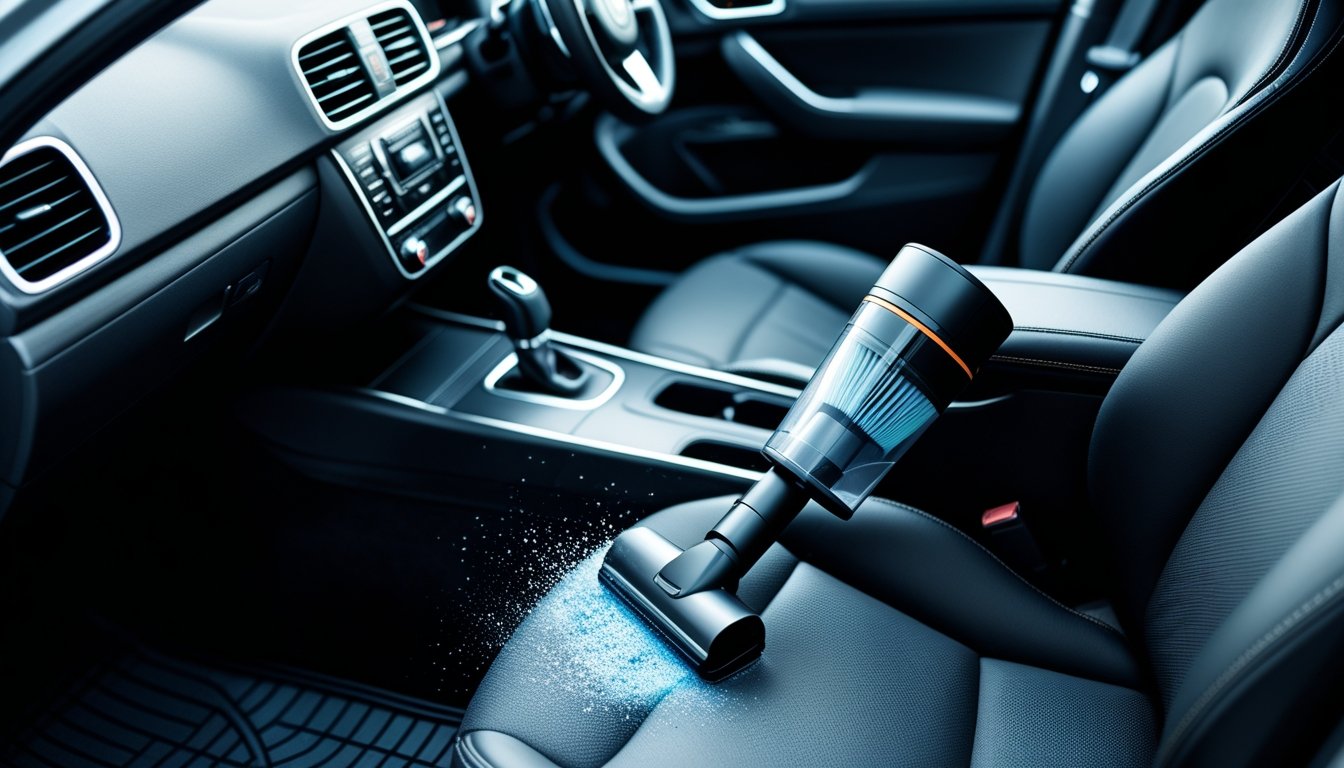
HEPA filters in car vacuums provide significant health improvements by removing allergens like pollen, dust mites, and pet dander from vehicle interiors. These filters also capture harmful mold spores and bacteria that can cause respiratory issues and spread germs.
Allergy Relief from Pollen and Dust Mites
HEPA filters capture 99.97% of particles that are 0.3 microns or larger. This includes common allergens that trigger reactions in sensitive individuals.
Pollen grains typically measure between 10-100 microns. Car interiors collect pollen when windows are open or when it sticks to clothing and shoes. Regular vacuums often blow these particles back into the air.
Dust mites produce waste particles as small as 2-5 microns. These microscopic particles become airborne during cleaning and settle on seats, carpets, and air vents. HEPA filtration prevents these allergens from recirculating.
Pet dander removal is equally important for vehicle owners with animals. Dander particles range from 0.5-40 microns and can remain airborne for hours. A HEPA-equipped vacuum traps these particles instead of spreading them throughout the cabin.
People with asthma or allergies notice fewer symptoms after using HEPA filtration. Sneezing, watery eyes, and breathing difficulties decrease when airborne allergens are properly captured and contained.
Mold Spore and Bacteria Removal for Germ Reduction
Mold spores measure 1-30 microns and thrive in damp car environments. Spilled drinks, wet shoes, and humidity create perfect conditions for mold growth in vehicles.
HEPA filters excel at mold spores filtration because they capture particles well below the typical spore size. This prevents spores from spreading to other areas of the car during cleaning.
Airborne bacteria capture is another key benefit. Many bacteria range from 0.3-2 microns, making them difficult for standard filters to catch. HEPA technology traps these germs effectively.
Car interiors harbor bacteria from multiple sources:
- Food spills and crumbs
- Sweaty gym clothes
- Muddy shoes and boots
- Pet accidents
Regular cleaning with HEPA filtration reduces bacterial loads significantly. This creates a healthier environment for passengers, especially children and elderly individuals who may have weaker immune systems.
The sealed filtration system ensures captured germs stay trapped. Standard vacuum bags and filters often leak, allowing bacteria and mold spores to escape back into the air.
Performance Trade-Offs
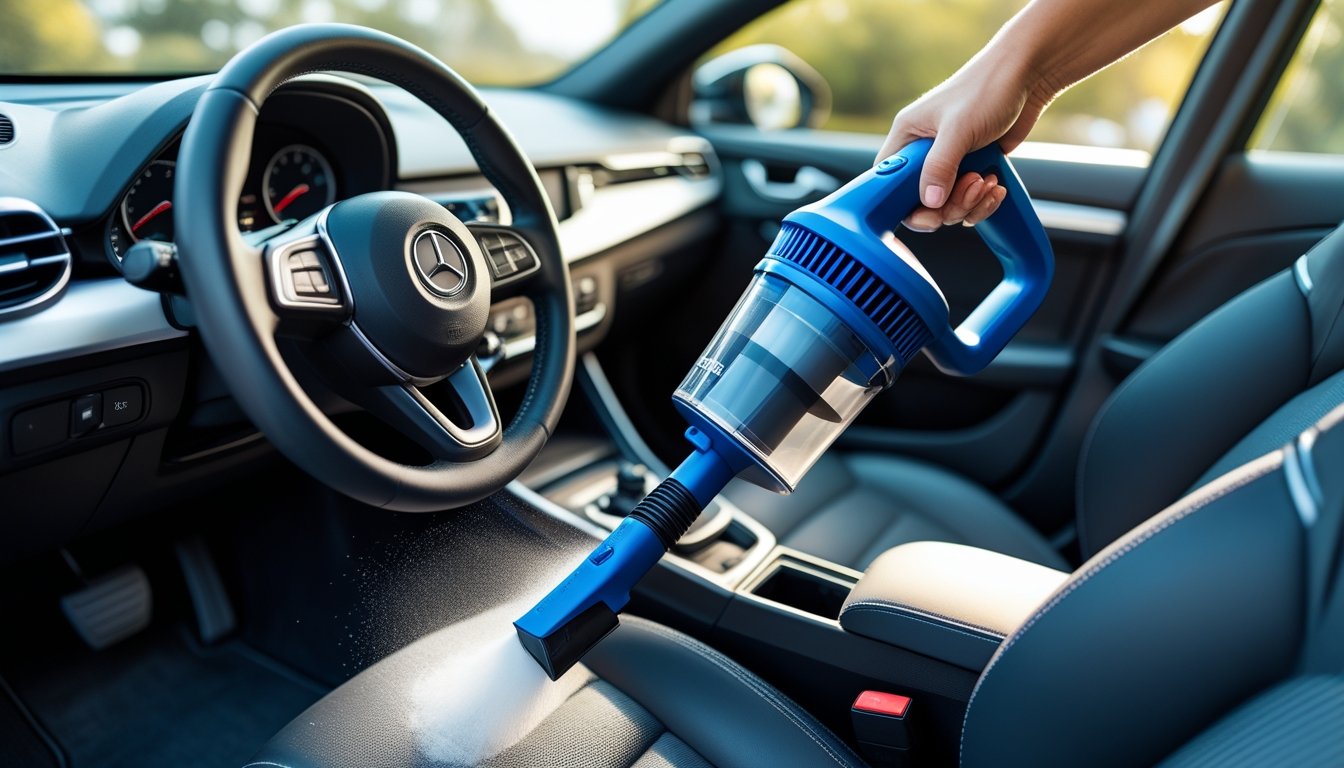
HEPA filters create resistance that reduces airflow and suction power in car vacuums. Many manufacturers add pre-filters or cyclonic stages to balance filtration efficiency with cleaning performance.
Pressure Drop Versus Suction Power
HEPA filters block airflow as they trap particles. This creates pressure drop that reduces suction power by 20-40% compared to standard filters.
Dense HEPA media forces air through tiny spaces. The motor works harder to pull air through the filter. Vacuum suction power drops as the HEPA filter loads with dirt and debris.
Car vacuums with 12V motors feel this impact more than plug-in models. Lower suction makes it harder to pick up heavy debris like sand or pet hair from car seats.
Users notice longer cleaning times. The vacuum may struggle with deep carpet pile or crevices between seats. Some models compensate with larger motors, but this drains car batteries faster.
Why Some Designs Add Pre-Filters or Cyclonic Stages
Pre-filters catch large debris before it reaches the HEPA stage. This protects the expensive HEPA filter and maintains better airflow longer.
Cyclonic pre-filter systems spin dirt out of the airstream first. The cyclone removes 70-85% of particles before air hits the HEPA filter. This reduces pressure drop across the main filtration stage.
Two-stage designs keep suction power higher throughout cleaning sessions. The HEPA filter stays cleaner and maintains vacuum filtration efficiency longer.
Pre-filters cost less to replace than HEPA filters. Users can clean or swap foam pre-filters between jobs while the HEPA filter lasts months longer.
Choosing the Right HEPA Car Vacuum
Not all car vacuum cleaners with HEPA filters are the same. The best options have true HEPA certification, strong power ratings, and practical features that make cleaning easier.
Key Specs: True HEPA Certification, CADR, Power Options, Nozzle Attachments
True HEPA certification matters more than basic HEPA claims. Real HEPA filters remove 99.97% of particles 0.3 microns or larger. Many vacuums use “HEPA-type” or “HEPA-style” filters that don’t meet this standard.
Power Options to Consider:
- Cordless HEPA car vacuum: 12V to 20V for portability
- Corded models: Plug into 12V outlet for constant power
- Portable HEPA car vacuum: Battery-powered for easy storage
CADR ratings show how much air the vacuum moves per minute. Higher CADR numbers mean faster cleaning. Look for CADR ratings above 50 CFM for car interiors.
The best HEPA filter vacuum for pet hair needs strong suction and special tools. Pet hair attachments have rubber bristles that grab fur from seats and carpets. Crevice tools reach between seats where pet hair hides.
Essential Nozzle Attachments:
- Crevice tool for tight spaces
- Upholstery brush for fabric seats
- Pet hair tool with rubber bristles
- Extension hose for reaching back seats
Noise Level and Filter Replacement Cost
Cordless HEPA car vacuum reviews often mention noise as a key factor. Most car vacuums run between 70-85 dB. Quieter models under 75 dB work better in neighborhoods or parking garages.
Loud vacuums above 80 dB can hurt ears during long cleaning sessions. Check dB ratings before buying. Some portable models sacrifice power for quieter operation.
Filter replacement costs add up over time. HEPA filters need changing every 3-6 months with regular use. Replacement filters cost $15-40 each depending on the model.
Filter Cost Considerations:
- Generic filters cost less but may not fit properly
- OEM filters ensure proper seal and performance
- Some models have washable pre-filters to extend HEPA life
Calculate yearly filter costs before choosing a vacuum. A cheaper vacuum with expensive filters might cost more long-term than a pricier model with affordable replacements.
Installation and Filter Replacement
Proper HEPA filter installation and timely replacement keep car vacuums working at peak performance. Regular maintenance prevents clogs and maintains strong suction power for effective cleaning.
Step-by-Step Guide to Swapping the HEPA Cartridge
Most car vacuums place the HEPA filter inside the dust chamber or near the motor housing. Users should turn off and unplug the vacuum before starting any filter work.
The first step involves opening the dust chamber or filter compartment. Many models have twist-lock mechanisms or simple clips that release with gentle pressure.
Removing the Old Filter:
- Pull the filter straight out without forcing it
- Note the direction it faces for proper reinstallation
- Check the filter housing for debris or damage
Before installing the new HEPA filter, users should clean the filter chamber with a damp cloth. This removes dust buildup that could affect the seal.
Installing the New Filter:
- Insert the filter in the same direction as the old one
- Push firmly until it seats completely
- Listen for a click or feel for the filter to lock in place
The final step requires closing the dust chamber securely. A loose chamber door creates air leaks that reduce suction power and let unfiltered air escape.
Tips to Avoid Leaks and Extend Filter Life
HEPA filter lifespan in car vacuums typically ranges from 6 to 12 months with regular use. Heavy-duty cleaning or dusty conditions may require more frequent changes.
Users can extend filter life by tapping out debris between uses. Gentle tapping removes loose dirt without damaging the filter material. Never wash HEPA filters with water as this destroys their effectiveness.
Signs a Filter Needs Replacement:
- Reduced suction power
- Visible tears or holes
- Strong odors during use
- Filter appears gray or black
Sealing leaks requires checking all connection points where the filter meets the housing. Rubber gaskets should lay flat without cracks or gaps. Replace damaged gaskets immediately to maintain proper airflow.
A HEPA filter replacement schedule helps maintain consistent performance. Mark calendar dates or set phone reminders based on usage frequency. Light users can replace filters every 8-10 months, while frequent users need changes every 4-6 months.
Real-World Use Cases
HEPA filters prove their worth in specific cleaning situations where regular filters fail. Pet owners, allergy sufferers, and drivers in dusty conditions see the biggest benefits from these advanced filtration systems.
Scenarios: Pet-Hair Cleanup, Spring-Time Pollen, Post-Roadwork Dust
Pet owners face constant battles with dander and hair that regular vacuums miss. HEPA filters capture microscopic pet dander particles as small as 0.3 microns. This includes the proteins that trigger allergic reactions in sensitive passengers.
Dog and cat hair carries oils and dead skin cells deep into fabric seats. Standard filters allow these allergens to recirculate through the car’s air system.
Spring pollen season creates major problems for drivers with allergies. Pollen grains range from 10 to 200 microns in size. HEPA filters trap even the smallest pollen particles that settle on dashboards and floor mats.
Cars parked under trees collect heavy pollen loads on exterior and interior surfaces. Regular cleaning without HEPA filtration pushes pollen around rather than removing it completely.
Post-roadwork dust contains fine concrete, asphalt, and metal particles. These particles measure between 0.1 to 10 microns. Construction dust settles into air vents and upholstery where it becomes airborne during driving.
Standard vacuum filters miss the smallest dust particles. These particles then circulate through cabin air systems for weeks after initial exposure.
Brief Testimonial or Data Point if Available
Studies show HEPA filters remove 99.97% of particles 0.3 microns or larger. Pet owners report 85% fewer allergy symptoms after switching to HEPA-filtered car vacuums.
Construction workers using HEPA car vacuums measured 40% less airborne dust in vehicle cabins. Regular maintenance with HEPA filtration keeps particle levels low between deep cleaning sessions.
Frequently Asked Questions
HEPA filters in car vacuums capture 99.97% of particles as small as 0.3 microns, including dust mites, pollen, and pet dander. These filters prevent allergens from recirculating back into the cabin air during cleaning.
What are the benefits of using a HEPA filter in a car vacuum?
HEPA filters trap microscopic particles that standard filters miss. They capture dust mites, pollen, pet hair, and bacteria effectively.
The filters prevent allergens from blowing back into the car during vacuuming. This keeps the cabin air cleaner for passengers.
HEPA filters also extend the life of the vacuum motor. They block fine dust from reaching internal components.
How does a HEPA filter improve air quality inside a vehicle?
HEPA filters remove airborne particles as small as 0.3 microns from car interiors. Standard vacuum filters only catch larger debris like crumbs and visible dirt.
The filters capture invisible allergens like dust mite waste and pollen grains. These particles often float in cabin air and cause breathing problems.
Without HEPA filtration, vacuums blow fine dust back through their exhaust. This creates a dust cloud that settles on clean surfaces.
Can HEPA filters in car vacuums reduce allergy symptoms for passengers?
HEPA filters remove common allergens that trigger symptoms in sensitive passengers. They capture pet dander, pollen, and dust mite particles effectively.
Regular vacuuming with HEPA filtration reduces allergen buildup in seats and carpets. This creates a cleaner environment for people with asthma or allergies.
The filters prevent allergens from becoming airborne during cleaning. This stops particles from spreading to other areas of the vehicle.
What makes HEPA filters different from standard car vacuum filters?
HEPA filters use dense fiber mats that trap particles through three mechanisms. They capture particles by impact, interception, and diffusion.
Standard vacuum filters only use basic mesh or foam materials. These materials catch large debris but allow fine particles to pass through.
HEPA filters must meet strict efficiency standards set by government agencies. They capture at least 99.97% of particles measuring 0.3 microns or larger.
How often should HEPA filters be replaced in car vacuums to maintain efficiency?
Most HEPA filters need replacement every 6 to 12 months with regular use. Heavy use or dusty conditions may require more frequent changes.
Clogged filters reduce suction power and cleaning effectiveness. They also strain the vacuum motor and increase energy consumption.
Some HEPA filters can be washed and reused several times. Others are disposable and must be thrown away when dirty.
Are HEPA filters effective in trapping ultra-fine particles in vehicles?
HEPA filters capture particles smaller than what the human eye can see. They trap bacteria, smoke particles, and fine dust effectively.
The filters work best on particles between 0.3 and 10 microns in size. This includes most common allergens found in vehicle interiors.
HEPA technology removes up to 99.97% of airborne particles during vacuuming. This makes them highly effective for deep cleaning car interiors.

